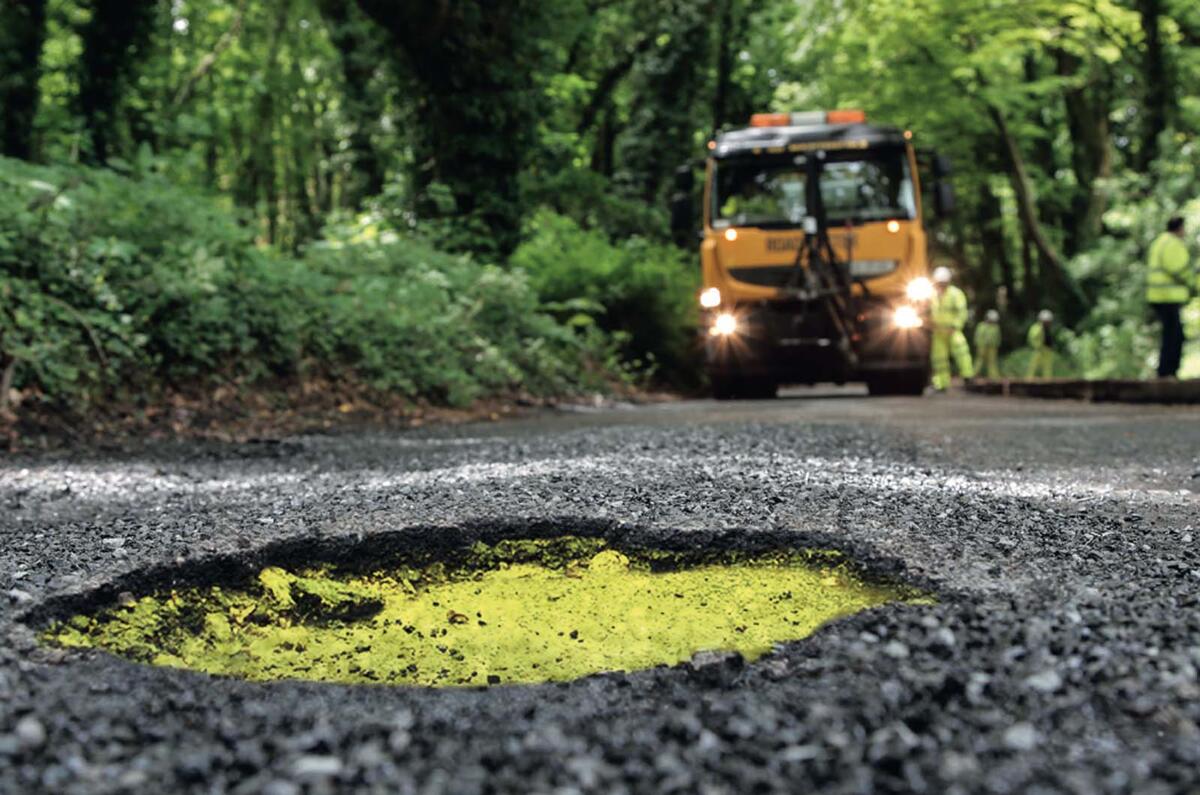Where are potholes at their worst? I know, bleedin’ everywhere at the moment.
But when it’s not bleedin’ everywhere, where mostly do you find them? My reckoning is: near junctions, places where trucks go, places where we stop and start.
There’s a reason for this. A day with the brilliant Kiwi race instructor Rob Wilson is insightful for many, many reasons. Coach to about half of today’s F1 grid, Wilson tends to teach his racing techniques at Bruntingthorpe test track.
Potholes: how much they cost the UK and how they are fixed
During the day, he’ll take them to an area of the circuit where asphalt is beginning to break up, to explain braking theory. And predominantly, when one finds the little marks as the track’s top surface begins to give way, it’s in a braking area.
Because even in a lightweight racing car with stiff suspension, as a driver squeezes the brakes, so weight is transferred onto the front tyres and they grip like anything as speed is dispensed. Wilson will point out that every gear downshift, even if a driver is good at matching revs, shifts weight on and off the tyres, perhaps 20kg, 30kg here and there, which all unsettles the car and adds length to its braking distance.
Thus, if a racer can save their gearshifts until late in the braking zone, they can brake more smoothly in the earlier stages, which is more efficient, scrubs off speed better, thereby making the braking distance shorter, so they can start to brake later, which means more time on the throttle, which means going faster overall.
But there’s another meaning to those broken bits of asphalt, which pertains to this column. All of the energy that goes into wearing out a car’s tyres and heating up its brakes? Well, the same energy goes into the track surface beneath the car. Just as a piece of Armco takes energy as a race car crashes into it, so too the asphalt is responsible for the friction used to decelerate a vehicle.
Hence, roads are particularly bad where we’re asking them to cope with vehicles stopping and starting. In the stony lane outside my house, there’s a hole where, I reckon, the postman engages second (I’ve seen him; he’s not that smooth). Down the road, it’s broken up near a set of traffic lights. There are loads of spots like this.
Sure, for the most part the roads are just unfathomably crap everywhere: because councils aren’t good at fixing small potholes so they become big ones, because we allow utility and communications companies to dig up road surfaces to install new hardware and then not resurface properly, because the rate of vehicles on the road is increasing at a rate of 650,000 cars a year, and that every year is a record year for vehicle miles travelled.
But how much, I wonder, is because cars have become heavier, brake better and are fitted with ever more capable tyres? In 2007, a BMW 325i we tested weighed 1546kg and wanted 50.9m to stop from 70mph. Last year, a BMW 330e we tested weighed 1787kg and yet stopped from 70mph in just 48.8m. We are asking more and more, from road surfaces that were not designed to take it, while denying them the maintenance they require.







Join the debate
Add your comment
@ Bomb
.....funny that Bomb, but they can always find money for vanity projects which make no ones life better, and indeed in some cases clutter-up the countryside!
Councils don't have a pot to
Councils don't have a pot to piss in so it's no great surprise there are millions of potholes.
Combined with an ever increasing and mobile population with a finite amount of roadspace and you've got the ideal recipe for shitty road surfaces everywhere.
Potholes
It amuses me to read Autocar every week and see the never ending complaints about the state of the roads. I then turn to the road tests and see 4 or more stars given to vehicles which weigh 2 tonnes or more. A 2 tonne vehicle causes 3 times as much road damage as a 1.5 tonne vehicle, so their proliferation must have a substantial effect on the state of the roads.
How about setting an example Matt? Take one star from every vehicle that exceeds 1500kg. You will be doing your roads and the environment a favour.